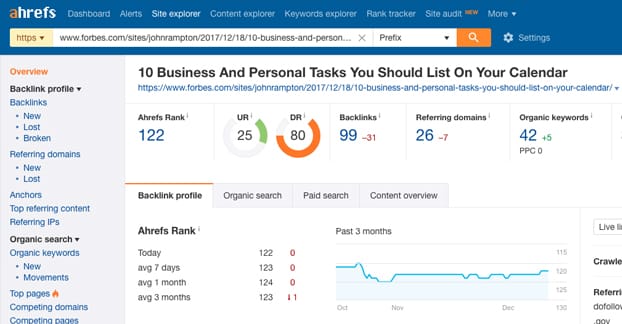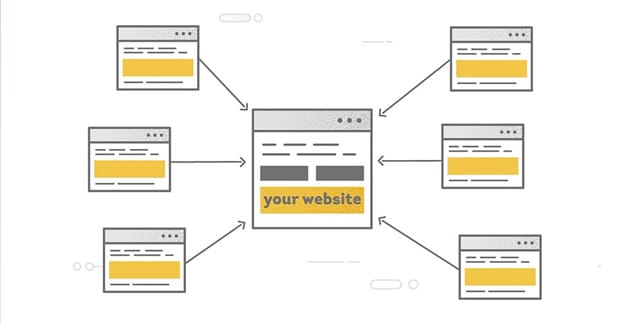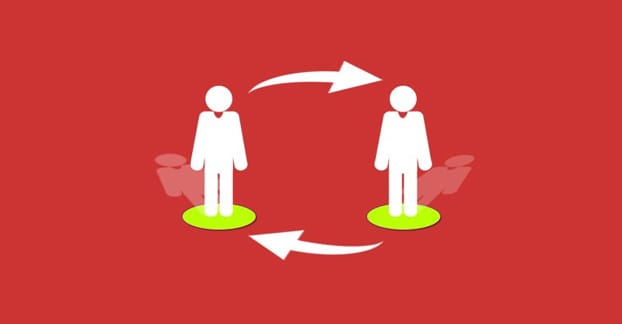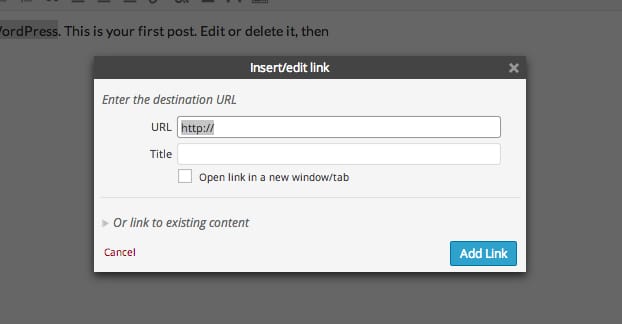When you guest post on another site, you want to make that guest post as successful as possible, so that you get as much value out of it as you can. When your guest posts are successful and popular, you’ll be invited back to write more, which further benefits you. It’s a sort of ongoing relationship for mutual benefit that can stretch on for years.
The usual form of promotion for guest posts is generally just social media shares. It’s easy to link to a post you wrote on another site from your Twitter or Facebook page. It gets a little promotion, and it’s expected, but it’s basically the least you can do. If you want to stand out and truly succeed, you need to turn to second-tier link building.
What is Second-Tier Link Building?
The concept of “tiered link building” comes from some black and gray hat techniques. Picture a pyramid. At the peak of the pyramid is your main site. It’s the site you have monetized, it’s the flagship for your business, all of that.
One tier below the peak are all of the sites that link directly to you. When you post on Facebook with a link, Facebook becomes that first-tier link. When you guest post with a link in the bio or in the content organically, that’s a first-tier link.
Second-tier links are all the sites that link to the sites that link to you. When you guest post on Site A, you can reach out to site B and get site B to link to site A. This earns site A more value on that post, which trickles down to you through link juice and makes them happier that they published your content.
How is this a black or gray hat technique? Well, the original concept of tiered link building involved making all of those tier 1 and tier 2 sites yourself. You made up a bunch of thin content microblogs, possibly with stolen or scraped content, just enough to look vaguely legitimate at first glance, and just enough to get a little bit of link juice from Google. The tier 2 sites feed the tier 1 sites, which feed your site, and you benefit from it.
Now, obviously I’m not going to tell you to implement some sort of black hat technique for your guest posts. That’s a quick way to be discovered and banned from writing further guest posts, have your content removed, and possibly even get a penalty from Google if they take interest.
However, everything changes if the sites are legitimate and the links aren’t artificial. Obviously, the tier 1 site is already legitimate. It’s the site that’s hosting your guest post, the site that’s linking to you. What you want to do, then, is build links to that site in any way you can.
The goal of second-tier link building is to add as much additional benefit as you can – for a reasonable amount of effort – to the people who link to you.
The better you are for them, the better they are for you.
How to Implement Second-Tier Link Building
There are a lot of potential sources for your second-tier links, though one of the most powerful is actually just your own site. You linking naturally to your guest posts sends your own site’s link juice over, where it is filtered and sent back.
You have to be careful about doing this. Much like tiered link building, this can run afoul of other exploited techniques in the past. Specifically, in this case you might be seen doing something called Reciprocal Link Building.
Reciprocal link building is where you and another site agree to link back and forth to each other, often on a one-for-one basis. This alone isn’t a problem; many sites link to each other fairly frequently and it doesn’t penalize either one. The issue is that entire networks sprung up based around reciprocal link building. You would register and you would be given a site to link to, and you’d earn credits for linking to sites in the network, and you could spend credits to get links from other sites in the network.
As you might expect, Google really didn’t like this artificial exploitation of the power of links. Since links are so fundamental to SEO, they couldn’t exactly just change to get around the problem. Instead, they just made it a penalty if they determined the links you posted and received were too artificial. It wasn’t actually hard to detect a reciprocal link network, after all. All these sites linking to one another in relatively quick succession, with little relationship or value between them? Yeah, that’s a penalty.
When you guest post on a site and they link to you in that guest post, it’s fine. When you link to that site by way of promoting your guest post, that is also fine. If you do this repeatedly with a bunch of different sites, it’s fine, provided those links all maintain value and relevance to your content.
That’s always the sticking point, right? Your links always need to point to relevant or valuable destinations. Whether it’s a landing page, a product you recommend, a resource or tutorial, or a guest post you wrote for another site, there’s always reason to believe your users are interested in seeing that content.
So method 1 for second-tier link building is to just link to your own guest posts from your own site. However, you can do this with a bit of method rather than haphazard madness. Here are my tips:
- Start by creating and maintaining a spreadsheet with all of your published guest posts. I recommend a column with the destination site, a column with the actual post link, a column with the title, one for the topic in general, and one for the number of times you’ve linked to the post in the past. If you want to go one step deeper, you can record every post you’ve linked to the guest post from, as well as anchor text and other details. I don’t personally find that much detail useful.
- When you publish a new guest post, make sure to link to it from a blog post on your site that is published within a week of the guest post being published. This is your nod to immediate promotion.
- Periodically throughout the following months or year, link to the guest post at least one more time in another organic post you publish. This continues the cycle of value and shows the host of your guest post that you haven’t forgotten about them.
I generally try to spread out links fairly evenly. If a guest post is older than a year, it’s probably not necessarily too relevant, so it can be dropped from the rotation. New guest posts are always there to fill in, of course.
The exception is if the guest post is fairly evergreen and has maintained traffic and value. If it has become a well-cited resource, you can strive to keep it alive by linking to it whenever the need arises. You can also work with the host of the post to keep it up to date for maximum value. This is why you often see posts on certain topics from 2012 or 2013 with “last updated: May 2017” or whatever up at the top. The topic still maintains relevance, so the author keeps it up to date rather than writing new instances and risking duplication issues. Feel free to link to those as often as you want.
Method 2 is related; just link to the host site occasionally, even if the content isn’t yours. It doesn’t directly funnel link juice into your content, and it doesn’t directly help you, but it builds goodwill with the site you’re linking to. You’ll probably earn the occasional organic link in return, and you’ll be more likely to get another guest post slot in the future.
Links are like currency with SEO, but not a currency you can use to buy things. It’s a currency of favor. Very few people consciously tally up the links they get from one source or another, and even fewer actually use that information as the basis for their decision-making. Instead, it’s a matter of the site owner recognizing that they’ve seen you before, you’ve linked to them before, you seem to like them, they might as well give you a chance. Or, if they’re a much smaller site, seeing you as a benevolent superior who is willing to help them grow.
Method 3 is the usual social media promotion. Links from Facebook, from Twitter, and from other social networks don’t necessarily carry much weight on their own as links. What they do, however, is have the potential for traffic and exposure through the roof.
We’ve all seen a post go viral. Just one post that happens to catch the eyes of your audience at just the right time, everyone latches on and starts sharing it around. There’s not often much rhyme or reason to it, it’s just something that happens. However, it can’t happen if the post is never made, right?
When you post a link to your guest post on social media, you’re showing it to your audience and giving them a chance to share it around. A few will share it regardless, which always happens. You’ll get some average amount of engagement. Your goal, though, is the viral surge. There’s no way to force it to happen, but if it does, you’re good to go.
Don’t forget that you can share a post more than once on social media. On Facebook, you can share the link about two or three days after the initial post. Too soon after the first post and they’ll overlap in exposure, but wait too long and interest may have died down. Still, it can be part of your filler rotation for months if you so desire. Twitter, meanwhile, can support much more frequent posting. You can share the same thing twice a day if you post frequently enough normally, or every day if not.
Obviously, you want to measure your audience and make sure you aren’t overdoing it. The last thing you want is for your guest post promotion to result in people unfollowing you or the host of the post.
Method 4 is tricky. Link to your published guest posts… from other guest posts you publish. You already have your own link in your bio, so why not add another in the content, to something else you want to promote?
There are a few benefits to this method. For one thing, site editors might not notice the content is also your own. They’re likely to check the URL, and will probably click to make sure it works and that the content is valuable, but they might not notice that you were the author over there as well. This means the link is both more likely to make it through the editorial pass, and more likely to remain followed, depending on the policies of the host site.
Secondly, a link to content that isn’t just on your own site comes across as links for context, for citation, or for further reading. You know, all of the normal reasons you would link to another blog post in your content. While it depends on the editorial process, these links can be highly beneficial and can be published quite easily.
The link sends value to your other guest post host, which sends value back to you. Your guest post now pulls double duty, linking to you and linking to someone who links to you. You get to double-dip in the value.
As a final note, ironically I have to say that such secondary link building techniques are most valuable when you use them on smaller sites. A major site like Forbes, Huffington Post, Buzzfeed or what have you has so many links and so much traffic that whatever you send their way is frankly minimal. They might look to see if you send them links via social media and do your token promotion, but they won’t see the effect of your secondary link building at all. These are all techniques best used when the recipient can see the effects.
 ContentPowered.com
ContentPowered.com








